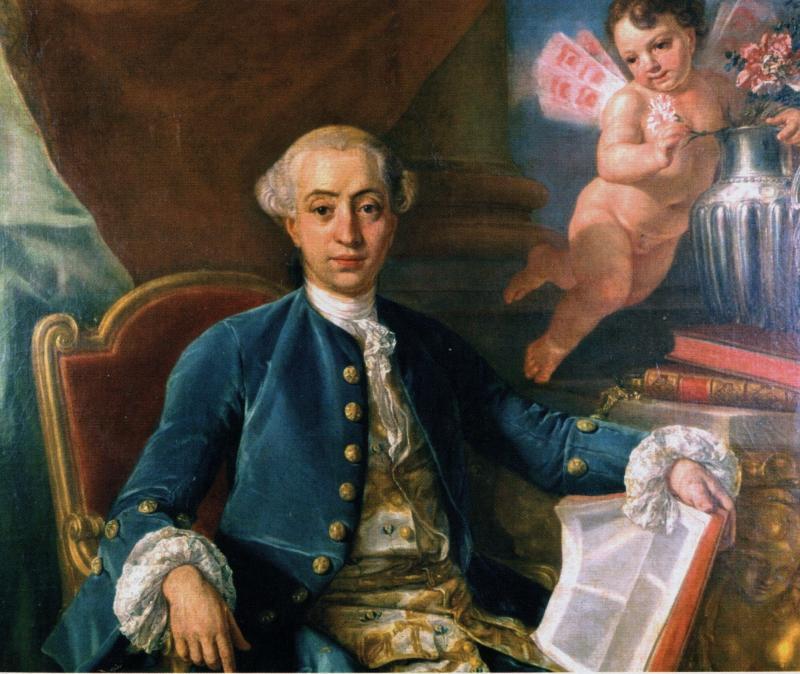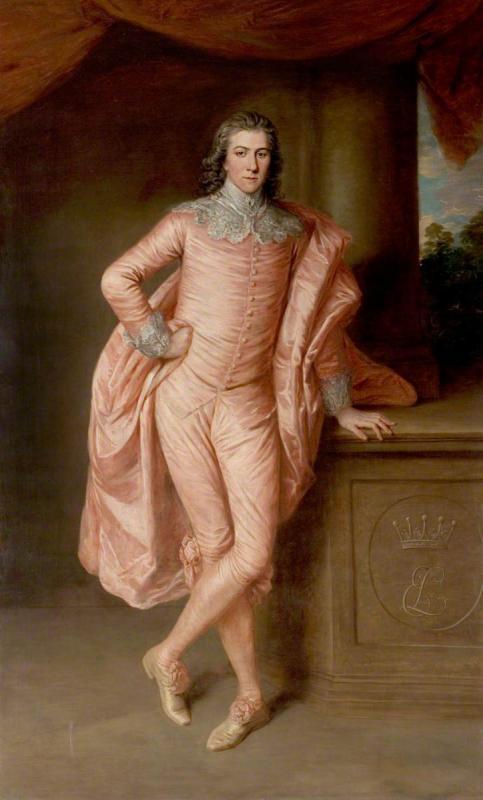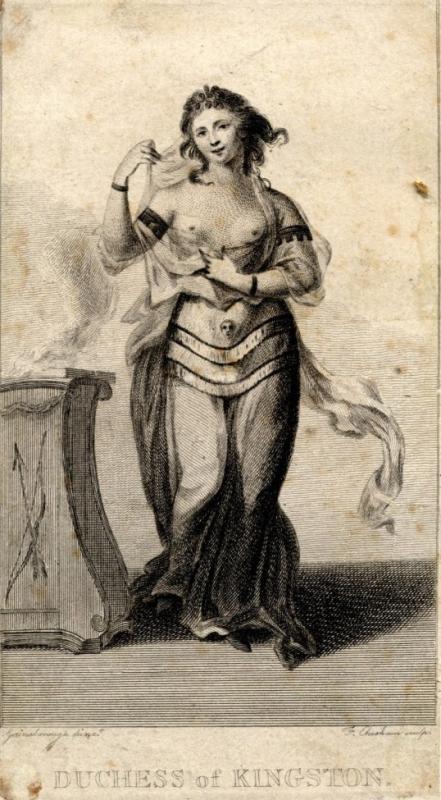Abstract
Stefan Zanović (1751-1786), a native of Budua (Venetian Albania), is most often remembered as an eighteenth-century impostor and adventurer who was at the centre of many a scandal. However, Zanović was also a prolific writer in several languages. This complex and eclectic figure maintained correspondences with acquaintances throughout Europe, often cheating courts and presenting himself under various aliases. His circle of acquaintances included not only Giacomo Casanova and Lord Lincoln, but also Elizabeth Chudleigh, Duchess of Kingston, whose lover he became. News of the couple’s exploits and flamboyant lifestyle was followed with great interest in England and throughout Europe. Because of Zanović’s acquaintances on the one hand, and the Duchess’ acquaintances on the other, they were frequently at the centre of social life in various European circles.
An elegant sociability was the inherent and distinctive trait of Stefan Zanović (1751-1786),1 writer, poet, adventurer and renowned impostor, originally from Budua in Venetian Albania (today Montenegro), he spent his entire life travelling far and wide and visiting many European courts. His natural elegance facilitated his efforts to meet with the circles of the highly placed wealthy and well-known people in society. In the manner of other known adventurers of the Enlightenment2 like Count Alessandro di Cagliostro, Chevalier d’Éon de Beaumont, or Count of St. Germain, Stefan Zanović, together with his brothers Primislav, Hannibal and Miroslav, was well-known in all European courts of the time for his fraudulent scams and adventures.
- 1. Mirko Breyer, Antun conte Zanović i njegovi sinovi (Zagreb: Matica hrvatska, 1928); Helmut Watzlawick, Bio-bibliographie de Stefano Zannowich (Genève: [s.n.], 1999), p. 7-23. Both in his own texts and in the literature of the time, as well as that of the succeding period, Stefan Zanović also appears with the following variants of his name: Stjepan/Stefano Zanovich/Zannowich.
- 2. Alexandre Stroev, Les aventuriers des Lumières (Paris: Presses Universitaires de France, 1997).
In order to effectively carry out these scams Zanović made use of his talent as a socialite. This meant that he needed to establish many social contacts so that he could fraudulently extort money from his preys. The money then enabled him to maintain a standard of living consonant with his role of wealthy socialite. For Zanović, sociability was a talent which allowed him to ingratiate himself with potential victims over and over again throughout Europe. Charming and intelligent, Zanović was capable of forming friendships based on social, political or emotional allegiance, depending on the particular environment in which he and his brothers were operating at the time. Stefan was corresponding with Pietro Metastasio, Voltaire, D’Alembert, Jean-Jacques Rousseau, Catherine II and Frederick William II of Prussia, to whom he dedicated a book of French poetry translated from Italian.
Zanović’s fame was quick to spread first in Venice and then throughout Europe, although his reputation for charm was marred by his proclivity for fraud. In fact, it was well-known that he was at the origin of a fraudulent scheme that led to disastrous losses in the Venetian financial sector, which soon turned into an international scandal. In 1772, the adventurer and swindler,3 thanks to the complicity of his brothers who used to exchange names and identities to intentionally create confusion had managed to challenge the Serenissima by setting it against Holland. Chronicles report4 that ’count Zanović’, as he falsely presented himself, was constantly engaged in some scam or other, a judgment shared by his contemporary and acquaintance, Giacomo Casanova (1725-1798) in the Esposizione ragionata (1785).5 Using the letters of recommendation of two merchants from Lyon and a certain Simone Cavalli, who resided in Naples and acted on behalf of the Republic of Venice, Zanović had managed to obtain diamonds and a large sum of money from the Dutch company Chomel en Jordan. In reality, as Casanova himself reports, the affair was much more complex than it seemed. However when the fraud was finally discovered, the injured party turned to Cavalli and the Republic of Venice to settle the debt. Cavalli, who like the Dutch company was unaware of Zanović’s involvement, was acquitted after the trial, but at this point, the Dutch demanded compensation for damages from the Venetian Senate, which turned to the mercantile court of Europe. As a result, the Republic, constantly on the alert against a possible Dutch attack, remained steadfast, more than ever resolute in asserting its innocence.
- 3. Roland Mortier, Impostori e creduloni nel secolo dei Lumi (Torino: Bollati Boringhieri, 1998), p. 11-18.
- 4. Storia universale sacra e profana, composta d’ordine delle reali principesse di Francia, dal sig. Giacomo Hardion, continuata dal sig. Linguet, e proseguita sino a tempi nostri dal sig. ab. Lorenzo, Ignazio Thiulen, Tomo XXXIV (Venezia: presso Gio. Antonio Curti Q. Vito, 1806), p. 276.
- 5. Giacomo Casanova, Esposizione ragionata della contestazione, Che sussiste tra le due Repubbliche di Venezia, e di Olanda (s.l.: s.n, 1785).
Not having a fixed abode, Stefan Zanović and his brothers stayed for a while at the estate of Simeon Zorić, a general in the Imperial Russian army and, in Russia, they were also accused of counterfeiting banknotes. Chronicles of the day also make note of their fraudulent activities in Gröningen, Berlin, Regensburg, Trieste, Naples, Paris, Vienna and Amsterdam. In Amsterdam, Zanović was arrested on April 4, 1786 and we have the testimony from the police interrogation in which Stefan made contradictory statements and declared himself to be at the same time Prince of Albania, Scanderbeg, Orthodox Patriarch, General-Captain of Montenegro, Count Zanović-Crnojević, and even Stephen the Little (1739?-1773), an obscure figure who had in the second half of the eighteenth century introduced himself into Montenegro and ruled as false tzar Peter III. The importance of his circles of friends and acquaintances, as well as the strategies he employed to be part of those circles, should be emphasised. His imagination and his cunning ability to present himself using various names, identities and physical appearances were impressive since he targeted people of the highest rank who would certainly not have been fooled easily.
The variety and complexity of Zanović’s scams are echoed in his rich and eclectic literary production: Pigmalione (1773), Riflessioni filosofiche-morali (1773), Lettere turche (1776), and L’Horoscope de la Pologne, de la Prusse, de l’Angleterre (1779) – these are just some of the titles of this adventurer who also changed identity in his literary works, presenting himself in various ways and constantly mystifying his own work.
In the course of his numerous socializings and travels, Zanović encountered the British people at least twice. The first contact involved financial fraud. At the end of the year 1770, Zanović set out on a trip to Florence where he took part in a game of cards, together with Casanova (who actually mentions Primislav). One of the players at this card game, was a frivolous gambler and squanderer: the nineteen-year-old English aristocrat and later British politician, Henry Fiennes Pelham Clinton (1750-1778), Earl of Lincoln. Bewitched by the charms of one of Zanović’s acquaintances and partners, he became an easy prey. When Lord Lincoln realized what was going on, he had already been duped of the sum of twelve thousand gold guineas. He paid a quarter of that amount immediately, and for the rest he gave Primislav several bills of exchange, which the swindler then took to London and for which he received payment. Lincoln himself died shortly afterwards, a victim of his debauched lifestyle.
Soon afterwards Zanović found himself in Rome where he assumed the identity of a pious pilgrim named Warta. At the same time, the British noble and courtier, Elizabeth Chudleigh (c. 1720-1788), Duchess of Kingston, was staying in Rome. The duchess was a famous British socialite, who had married a Royal Navy officer, Augustus John Hervey (1724-1779), but concealed the marriage so that she could retain her position as maid of honour to the Princess of Wales. The marriage failed and she became the mistress of Evelyn Pierrepont, second Duke of Kingston-upon-Hull (1711-1773), of Thoresby and of Holme Pierrepont in Nottinghamshire. Meanwhile, Hervey became heir to the Earldom of Bristol. The pair colluded in 1769 to conceal evidence of their marriage. Elizabeth committed perjury in an ecclesiastical court and married the Duke of Kingston within weeks. In 1776 the duchess was tried for bigamy in a trial that lasted five days and attracted so much public attention that tickets to the hearing were sought by members of the public. When she was found guilty she went to live in Russia at the court of Catherine the Great, and then to France.6 When in Rome she met a young man named Warta from Venetian Albania, who had aroused much interest in Roman social circles and who impressed her as well.7 French socialite and memorialist baronesse Henriette Louise de Waldner de Freundstein, Baronne d‘Oberkirch (1754-1803) noted that the duchess, who, as a young woman, was ‘sans aucun doute la plus belle femme de l’Angleterre’, had encountered Warta on her first trip to Italy:
- 6. Claire Gervat, Elizabeth: The Scandalous Life of an Eighteenth-Century Duchess (New York: Penguin Random House, 2004).
- 7. Histoire de la vie et des aventures de la duchesse De Kingston. Nouvelle édition. A laquelle on a joint une notice curieuse sur Stefano Zannowich, prétendu Prince Castriotto d’Albanie, avec les portraits de ces deux célèbres personnages (Londres: s.n., 1789).
‘Dans son premier voyage d’Italie, lorsqu’elle était à Rome la véritable souveraine du pape et des Romains, on lui an nonça, un jour, un seigneur nommé Warta, prince d’Albanie, dont la ville entière raffolait, et qui était cerlainement la plus belle créature que Dieu eût jamais faite. Il portait un costume resplendissant d’or et de pierreries, il était tou jours armé jusqu’aux dents et des plus belles armes du monde, dont il se servait très-adroitement‘.8
- 8. Mémoires de la Baronne D’Oberkirch sur la Cour de Louis XVI et la société française, ed. Comte de Montbrison (Bruxelles: Comptoir des Editeurs, 1854), tome 1, p. 251.
They were two personalities, two socialites who attracted each other: ‘Le prince Warta avait un esprit aussi fin que brillant, une conversation piquante et variée. Il montrait des sentiments généreux et nobles, un amour de sa patrie, une haine de l’oppression, enfin tout ce qui pouvait plaire à une femme’ (Montbrison 251-252). The passion of the duchess for the Adriatic swindler attracted public notice: ‘Élisabeth l’aima, elle l’aima plus qu’elle n’avait aimé le duc de Hamilton, dans son bel âge. Elle l’aima de toute la tendresse d’un cœur sur son déclin, elle l’aima follement’ (Montbrison 252). The bigamous duchess of Kingston was thirty years older than Zanović and she was undoubtedly fascinated by this young adventurer who flattered her and knew how to spark her admiration. Just as he had been able to seduce polite European society by manipulating their desire for the forbidden, he easily seduced the duchess. They became romantically entangled but he was undoubtedly charming the British lady to manipulate her. Nevertheless, their love affair was one of the most scandalous in British society at the end of the eighteenth century.
Zanović’s strategy of masquerading, his social skills, his ability to spot and exploit the weaknesses of others, and his cunning use of social connections with powerful and important people were all perfected throughout his extraordinary fraudulent life. His chicanery must have enjoyed the strong support of some elements of high society and it is unlikely that he could have succeeded in carrying out intrigues and scams without his well-established network of social contacts.
Share
Further Reading
Aleksić, Branko, ‘Deux lettres dédommageantes de Premislas Zanovich a Casanova’, L’Intermédiaire des casanovistes (no XVIII, 2001), p. 11‑22.
Delon, Michel, Le Savoir-vivre libertin (Paris: Hachette littératures, 2004).
Malaj, Vincenzo, Stefano Zanovich, un sedicente erede di Skanderbeg (s.l.: s.n., 1968).
Mortier, Roland, Le ‘Prince d’Albanie’: Un aventurier au siècle des Lumières (Paris: Honoré Champion Éditeur, 2000).
Preto, Paolo, I servizi segreti di Venezia. Spionaggio e controspionaggio ai tempi della Serenissima (Milano: Il Saggiatore, 2010).
![Augustin de [Marenkelle] Saint-Aubin, ‘Conte Stefano Zannouvich’, Collections numerisées de la bibliothèque de l’INHA, NUM EST 7970, s.d..](/sites/default/files/styles/notice_full/public/2024-02/STEFAN%201041_bensba_est007970_2.jpg?itok=2H_iCpCa)


